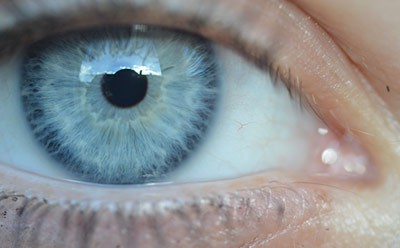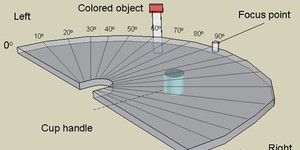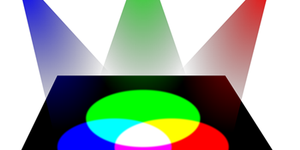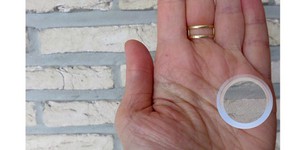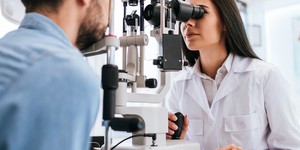Seeing in the Dark
Summary
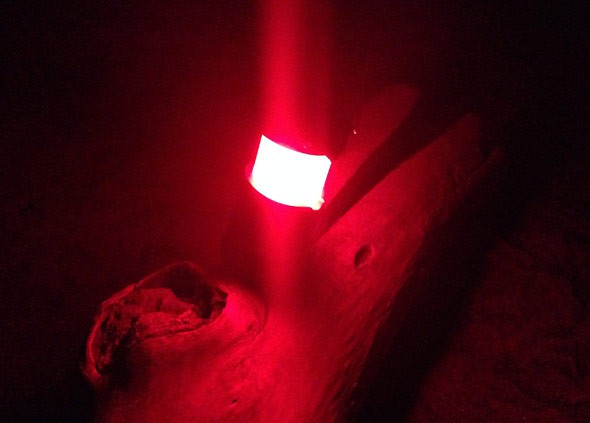 Image Credit: Sabine De Brabandere, Science Buddies / Science Buddies
Image Credit: Sabine De Brabandere, Science Buddies / Science Buddies
Introduction
Have you ever considered taking a nighttime nature walk? Would you wait until there is a full moon, so you could profit from sunlight reflected on the moon, or would you rather take a flashlight? Do you think trees would look black, green, or grey in the dark? Do this activity to examine your night vision and prepare for your next nighttime adventure!
Materials
- Flashlight that shines white light.
- Flashlight that shines red light. You can also hold a translucent red object like a translucent red food container lid in front of the white flash to make it shine red light.
- Dark room. Almost pitch-black works best. You can also do it outdoors at night, away from street lamps or other sources of light.
- Bag with markers, pencils, and pens of different colors.
- A helper whose eyes you feel comfortable looking into, or a mirror.
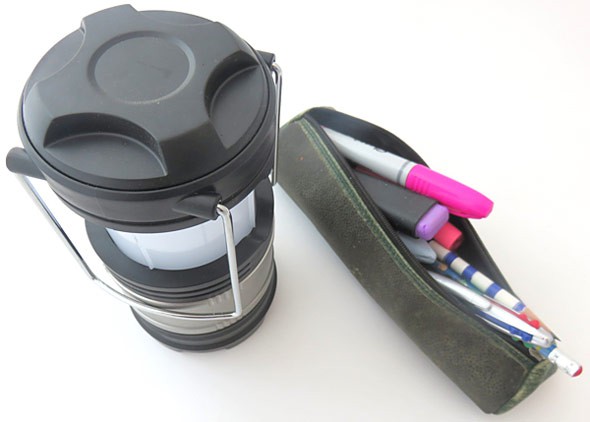 Image Credit: Sabine De Brabandere, Science Buddies / Science Buddies
Image Credit: Sabine De Brabandere, Science Buddies / Science Buddies
Instructions
- Before we start, you need to know what the pupil of an eye is. Look your helper in the eye or look at your eye in a mirror. The dark circle in the middle of the eye is the pupil. Pupillometry is the measurement of the diameter of the pupil of the eye. In the activity, you will look at the size the pupils.
 Image Credit: Pixabay user Shanon / CC0 creative commons
Image Credit: Pixabay user Shanon / CC0 creative commons
- Take the bag with markers, pencils, and pens and walk with your helper to a dark room or place.
- Allow your eyes to adjust to the dark for a few minutes.How is your vision in the dark (also referred to as night vision)? Can you see anything, and if so, can you recognize items? Can you describe them accurately?
- Let's test. Pick an object from the bag and investigate if you and your helper see well enough to describe the object.Can one or both of you identify what the object is? Can one or both also identify the color of the object?
- Repeat previous step with another object from the bag.Are the results identical? What does that mean?
- In a moment, you will switch on the light and instantly look at your helper's pupils or your pupils in the mirror.Do you think anything special will happen to the pupil?
- When you do this outside, skip this and the next three steps. Turn on the overhead light and quickly observe the pupils.How large were the pupils when you just turned on the light? How large are they when the light is on for a while? Why do you think this change happens?
- Test your vision when there is plenty of light. Take an object from the bag and hold it in the light.Can one or both of you recognize it? Can you see details like its color?
- Repeat previous step with another object from the bag.Are the results identical? What does that mean?
- Turn the light off and let your eyes adjust to the dark.
- Turn on your flashlight on the white light setting. Hold it close enough that you can clearly see your helper's eyes, but take care not to shine the light into them or look directly in the beam of light.How large were the pupils when you just turned on the light? What happens to the pupil size when you leave the light on for a while? Why do you think this change happens?
- Test your vision with this type of light. Take an object from the bag and hold it so it is illuminated by the white beam of light.How well can you see what is directly in the beam of light? Can one or both of you recognize it? Can you see details like its color?
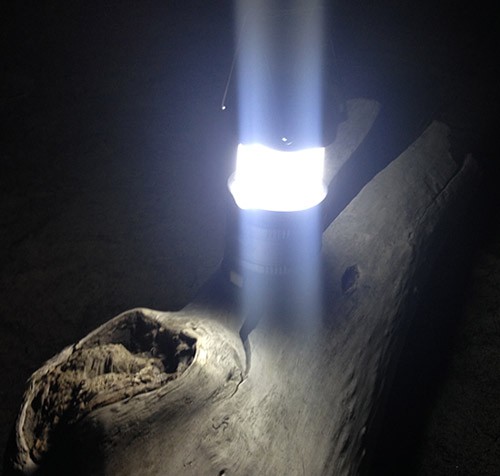 Image Credit: Sabine De Brabandere, Science Buddies / Science Buddies
Image Credit: Sabine De Brabandere, Science Buddies / Science Buddies
- Repeat previous step but this time, hold the object so it is not directly illuminated by the beam of light.How well can you see what is not directly in the beam of light? Can one or both of you recognize it? Can you see details like its color? Why would this happen?
- You just used a white beam of light. Now we will test a red beam of light.Do you expect your vision will be different when you have a red beam of light instead of a white one? If so, how and why do you expect it to be different?
- Repeat the steps you did for the white beam of light, but instead of a white light, choose a red light. Do not forget to let your eyes adjust to the dark before turning on the flashlight.Were your predictions correct? Now that you see what happens, why and how do you think this happens?
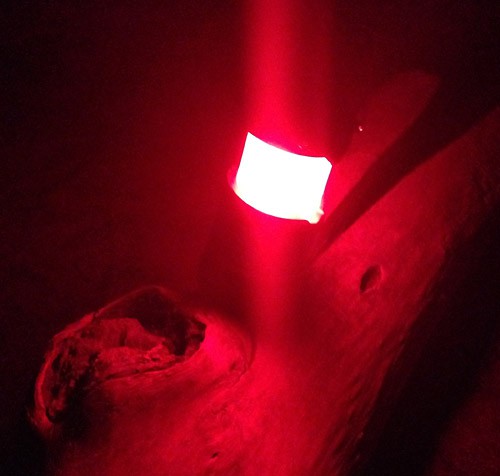 Image Credit: Sabine De Brabandere, Science Buddies / Science Buddies
Image Credit: Sabine De Brabandere, Science Buddies / Science Buddies
What Happened?
Did the pupils expand when exposed to an environment with little light and contract when there is plenty of light? Were you able to recognize objects in dim light, but unable to recognize their color? That is what our eyes are designed for.
The human eye is designed such that it can detect lines, contrast, and movement in dim light, but it needs plenty of light to see color. That is why in dim light conditions, you recognized objects, but failed to detect their color.
Pupil size changes to optimize vision in a large range of light conditions. When there is plenty of light, a smaller opening in the eye—or a smaller pupil—protects the back of the eye from getting damaged. In dim light, the pupils dilate to allow as much light in as possible. That is why you see the pupils change size when light conditions change. Red light does not trigger pupil contraction as much as other colors of light, making a red flashlight ideal for enjoying the night landscape.
Digging Deeper
Sight begins when light enters the eye. This light triggers light-sensitive cells in the back of our eyes and as a result, signals zoom along the optic nerve to the brain. The brain makes sense of the signals, giving us the experience of seeing. The human eye has two types of light-sensitive cells: cones and rods. The rods are extremely efficient: a tiny amount of light can trigger them. They are responsible for our night vision. They detect lines, contrast, and movement, but cannot distinguish color. The cones are responsible for color vision, but these need plenty of light to get activated. That is why in dim light conditions, you recognized objects, but failed to detect their color.
The pupil is the opening in the middle of the eye that allows light to enter the eye. Humans have round pupils. They appear black because light almost never escapes through them. The colored part around the pupil called the iris adjusts the size of the pupil. Its main function is to regulate the amount of light that enters the eye. In dim light, the pupils dilate (open wider) so more light can enter. Switch to bright light, and the pupils automatically contract. This contraction is the result of a small fraction of the nerve signal generated in the back of the eye triggering the muscles in the iris. As some nerve connections cross over to the other eye, both pupils contract in unison.
Pupil size does not only change with the intensity of light falling into the eye. It is also influenced by your emotional state. When you become overwhelmed with feelings like fear, anger, pain, love, or admiration, your pupil size changes. Some studies show that people even react to the pupil size of others in their environment. A head injury, illness, or drugs can also influence pupil size.
Ask an Expert
For Further Exploration
- Find an adult to accompany you on a night outing to an area where there is very little light pollution. How easily can you do a night walk with your flashlight off, with your flashlight on the red light setting, and with the flashlight on the white light setting? How is the experience different? Does the number of stars you can observe depend on the light you use?
- By wearing an eye cover over one eye while exposing the other eye to bright light, you can investigate how bright light in one eye changes the pupil size of the other eye. Do both pupils work in unison when they contract or expand, or does it happen independently?
- Not only light influences the size of your pupils; the way you feel also affects the size of your pupils. Can you design a test to see if pupils become larger or smaller when someone sees something they like a lot? What do your findings tell you? Look online and see if your findings coincide with findings from pupillometry.
Related Resources
Project Ideas
Activities
Lesson Plans
- MS-LS1-8. Gather and synthesize information that sensory receptors respond to stimuli by sending messages to the brain for immediate behavior or storage as memories.
Links
- Blog Post: Binocular Vision Eye Science
- Blog Post: The Eyes Have It!
- Blog Post: A Trick of the Eye for Halloween
- Scientific American: Pupils Dilate or Expand in Response to Mere Thoughts of Light or Dark


